How the Pandemic Has Taught Us to Get Back to Basics and Embrace the Concept of Total Wellness
9/22/2021
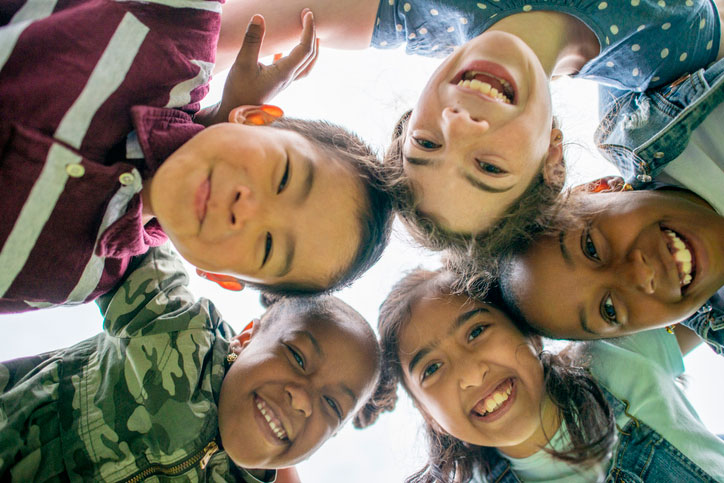
24 Future Forward Ideas: The Final Installment in Our 4-Part Series Exploring Practical Strategies for Better Teaching Based on What We Are Learning in the Pandemic.
Part 4 of 4: What We Know to Be True!

At this point, we all recognize that the pandemic brought to the forefront a lot of background issues that school communities were already struggling with for years. One of the big ones surfaced with the realization that when schools close, far too many students lose access to some of the basics they aren't getting at home. And when I say basics, I really mean basics - everything from the emotional support and sense of belonging that come from being part of a peer group to something as essential as a good, nutritious meal.
As educational leaders, we know Maslow's hierarchy of needs provides a framework for priorities in education, and life. When a student has housing and safety, proper nutrition, someone providing hope and love, and access to academic and social support, they have a much better chance at success in school.
During the pandemic, future forward leaders have been piloting many new ideas and practical solutions to address these issues. Even as we look for the funding and administrative buy-in to make some of these brilliant ideas last beyond the pandemic, many have already left their mark, setting a new precedent for how we should be taking care of our students.
What have we learned during the pandemic? I posed this question to educators and parents recently on Facebook. As responses came in from around the country, 24 future forward ideas surfaced that I feel are worth sharing. I laid out the first six of these strategies in part one of this series, six more in part two, and another six in part three. Here in the final installment, you'll find six more ideas for how future forward leaders can take what we have learned about self-actualization, esteem, love and belonging, and build on these lessons so we can continue to thrive and strengthen school culture in the years ahead.
19 - Increased Awareness of Our Students' Mental Health
In 1995, Daniel Goleman authored the book, Emotional Intelligence: Why It Can Matter More Than IQ. It started a movement where students' mental health became a priority, right up there with teaching reading and math. In fact, many leading researchers on social emotional learning and trauma informed instruction would put mental health needs well before academics.

Recently, the mantra of "Maslow before Bloom" has been resonating with educators. This is in reference to the work of Abraham Maslow in 1943 and Benjamin Bloom in 1956. Maslow's work with the hierarchy of needs helps educators determine how they can support students while Bloom's work delved into a tiered hierarchy of learning. Both offer guidance on how educators must first meet a child's basic needs before we can teach them content.
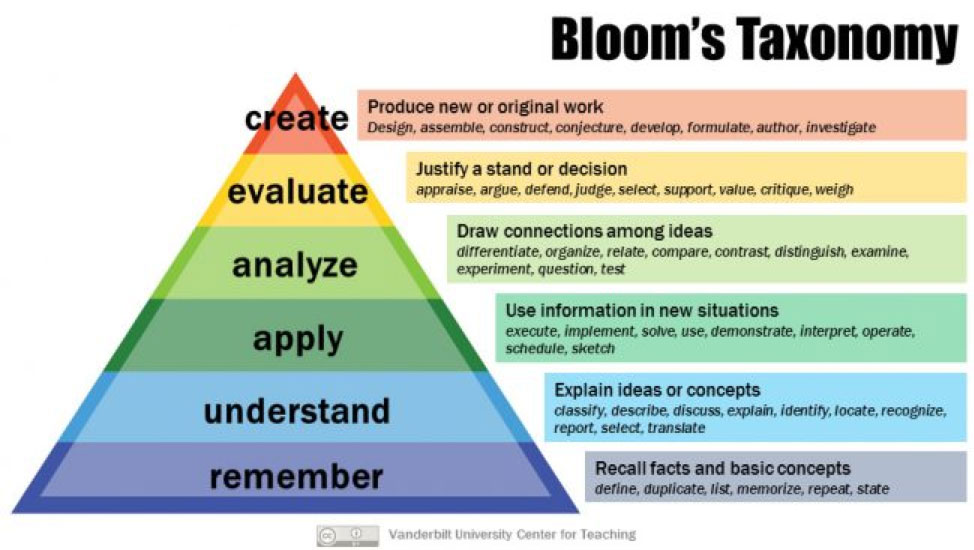
Future forward leaders have been working on incorporating this guidance, developing multi-tiered systems of support for social and emotional learning as a way to transition students to academic learning.
"Understanding that online learning/emergency home learning dramatically helped some kiddos with social anxiety (time away from lots of other people to work on their anxiety) and made some others struggle even more (due to reduced social support systems that occur in schools). Takeaway: let's find out the difference between these two groups and keep options open for helping both sets of kiddos."
- Ryan Rominger, professor, psychologist, and counselor, in Floweree, Montana
As leaders connect with mental health providers in our schools, they should be looking for opportunities to expand access to these services outside of the school setting as well.
Some communities have comprehensive school and community treatment programs in place to support the mental and physical health needs of students. Some schools have outside mental health providers working with students on-campus, and some even rent space off-campus where students can go to talk with a psychologist during school hours. Partnering with school counselors, these programs can provide wrap around services for families in the school community.
"This may not be a popular opinion, but speaking as a mental health professional in an elementary school, this past year has wreaked havoc on the mental health and social skills of children… Sadly, many schools have become a place where children come for love, not to learn, and this past year was tough on those kids. And across all demographics I've seen a huge decrease in children's ability to socialize and use coping skills. Increased internet usage has already caused many of our youth to struggle to interact in society and we're seeing an uptick in suicidal ideation.. it's a definite fear that being given an option to not have to attend school in person and practice those relational/social/life skills during those important developmental years will cause problems in the future."
- Sally Seidel, Licensed Clinical Professional Counselor (LCPC) working with Aware, Inc. at Mountain View Elementary in Great Falls, Montana
What educators and future forward leaders do with this information is important. In fact, I predict our next move on the mental health front will determine the success of our public education system. I believe public education should provide easy access to mental health support, as well as training for all staff members.
"I really love [the future forward idea of] social and emotional health of students…. Something we need to take forward is always having in-class work available online. It shouldn't matter whether kids have a physical or mental reason for staying home from school, they should have access to their education. Teachers and students utilizing Google Classroom or whatever program should remain a constant moving forward."
- Jenny Combs, Director of the Alliance for Curriculum Enhancement (ACE) Consortium based out of Billings, Montana
Future forward leaders will continue to work towards supporting all students and staff with social and emotional learning.
20 - Breakfast and Lunch Provided in the Classroom
 As the federal and state governments maneuvered through the pandemic by giving advice on what educational leaders could or could not do, providing free meals for students the past year and a half has been a huge positive for everyone. This included free breakfasts for many students, as well as free lunches. This took the burden off of families feeling the financial pinch of the pandemic, and gave all students equal access to nutrition, at least for these two daily meals.
As the federal and state governments maneuvered through the pandemic by giving advice on what educational leaders could or could not do, providing free meals for students the past year and a half has been a huge positive for everyone. This included free breakfasts for many students, as well as free lunches. This took the burden off of families feeling the financial pinch of the pandemic, and gave all students equal access to nutrition, at least for these two daily meals.
Even with resources tight during the pandemic, we were able to serve the nutrition needs of students at a level never seen before in public education. I believe this policy needs to continue post pandemic.
One teacher we talked to, Melissa Riphenburg, said, "I would love to see free breakfast and lunch continued for all kids." She immediately noticed a difference with her students. The problem behaviors she once saw that could have been attributed to inadequate nutrition came to an end when the food program rolled out in the midst of the pandemic.
Another idea many schools implemented during the pandemic to support social distancing was to have students eat in their classrooms instead of packing everybody into the cafeteria at the same time. An unanticipated positive outcome from this was an increase in classroom culture.
The age old adage resounds, "the family that eats together, stays together." Students bonded with each other and their teachers more than ever. Though teachers in many school districts have contract language that specifies a "duty free lunch," many teachers chose to stay and eat with their students. I thought it might just be a few school districts that used this strategy, but in following other education leaders on social media I saw that it was actually happening all over the country.
Elementary principal, Dr. Norah Barney, at Lincoln Elementary in Anaconda, Montana states, "Breakfast and lunch in the classroom needs to continue." She reported seeing a positive impact on school culture and fewer behavior incidents overall.
Ideas such as these sometimes get lost in the mix. But future forward leaders understand that this kind of thing can have an impact on school culture and will find ways to keep it going. They know that a positive school culture optimizes learning.
21 - Less Student Crowding on the Playground
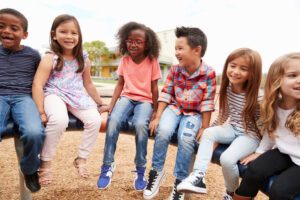 Supervision at school always seems to be stretched, especially when budgets are tight. The number of support staff is cut, and responsibilities are many times put back on to administration and teachers.
Supervision at school always seems to be stretched, especially when budgets are tight. The number of support staff is cut, and responsibilities are many times put back on to administration and teachers.
One strategy that many schools used during the pandemic for social distancing was to reduce the number of students on the playground at the same time. Students were allowed to spread out and only shared the playground with their same age cohort. Not surprisingly, this had a positive impact on reducing the number of behavior incidents.
Jamie Pool, a kindergarten teacher we talked to who works at Corvallis Primary School in Corvallis, Montana said, "Reducing the amount of kids on our playground at a time has reduced referrals." When students had more space, and only kids their own age on the playground at recess, there were fewer behavior incidents. In many schools, recess can include multiple grade levels which can lead to behavior situations between older and younger students.
A reduced number of students on the playground and a subsequent reduction in behavior incidents can also have a positive effect on school culture. When staff have to focus on being reactive as behavior incidents arise, they are less likely to have time to work proactively on prosocial behaviors and implementing positive behavior intervention supports (PBIS). Future forward leaders understand this concept and are working hard to promote this strategy.
22 - Adding in More Physical Exercise
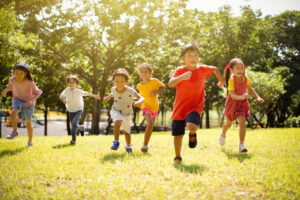 We talked about brain breaks in part two of this series. It's a point that's important enough to be worth revisiting, especially as we're discussing ways to promote overall wellness. It's no surprise that getting more physical exercise can have a hugely positive impact on learning. Even prior to the pandemic, some school districts were adding in three or four recess breaks for elementary students, and were seeing positive improvements in learning associated with this strategy.
We talked about brain breaks in part two of this series. It's a point that's important enough to be worth revisiting, especially as we're discussing ways to promote overall wellness. It's no surprise that getting more physical exercise can have a hugely positive impact on learning. Even prior to the pandemic, some school districts were adding in three or four recess breaks for elementary students, and were seeing positive improvements in learning associated with this strategy.
There is a difference between these two concepts: brain breaks and physical exercise. Brain breaks do not necessarily have to be physical in nature. They can be a break from the mundane work and can give students a chance to pause their focus, do something else, and then get back to work.
In many school districts across the nation where mask mandates were enforced, teachers created breaks in instruction to allow students to go outside and remove masks. This strategy provided students with enough room to social distance and get a break from wearing their masks. Some schools still required masks while outside at recess or during periods of exercise, which, of course, still came with all the benefits of a brain break.
Any P.E. teacher will tell you that finding time for more physical exercise pays off in the end. Best practice and research show that the brain is primed for learning and functions best when physical exercise is included in a child's academic regimen.
"(We spent) less time in the hallways and more time walking to our specials outdoors. (As we went to specials,) we skip, gallop, run, slide, etc... (This) gets kids outside more to breathe clean air."
- Jaime Pool, elementary teacher
Future forward leaders will continue to encourage and implement strategies and ideas to get students and teachers moving and exercising more.
23 - Simplifying Procedures
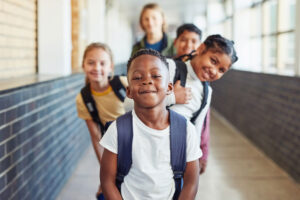 Don't sweat the small stuff. These five words help people avoid occupying too much of their time and mental bandwidth worrying about inconsequential problems, effectively saving energy for dealing with big ones.
Don't sweat the small stuff. These five words help people avoid occupying too much of their time and mental bandwidth worrying about inconsequential problems, effectively saving energy for dealing with big ones.
This is a great mantra, but it can be misconstrued in the education world. Things such as procedures and low level processes can be considered the small stuff. The problem with not putting time and effort into dealing with the small stuff is that it can eventually all pile up and become a big issue.
During the pandemic, educators reviewed almost all procedures and processes that may have been taken for granted. Things such as partnering students up for an activity, walking down a hallway, getting water from the water fountain, or even entering and exiting a classroom have all been reviewed with extreme scrutiny. Social distancing with the six-foot recommendation made all of it more difficult.
The silver lining behind reviewing these procedures is that it's given us an opportunity to really think about how we can use them most effectively to create a safer learning environment for our students. A thoughtful approach to developing best practices helps educators refine procedures in such a way that it makes us more efficient instead of bogging us down with endless hoop-jumping.
"(A future forward idea is to) Simplify all that we can from lunchroom procedures to hallways procedures. I have enjoyed the simplicity of these areas, as they tend to be where our kids have less supervision."
- Jeremy Smith, middle school teacher at North Middle School in Great Falls, Montana
Future forward leaders are reviewing how things get done in the schools and giving serious thought to which procedures they should keep, modify, or discontinue. Putting time into reviewing small procedural details will definitely pay off in the end.
24 - The Importance of Listening to Our Students
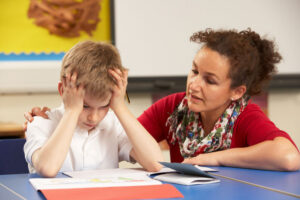 In my opinion, out of all twenty-four future forward strategies we have listed, listening to our students more is the most important.
In my opinion, out of all twenty-four future forward strategies we have listed, listening to our students more is the most important.
This is not to say that we as educators weren't listening pre-pandemic, but the idea of devoting all the time necessary to really hearing what students have to say has proven itself to be vital in really meeting their wellness needs.
Making sure students are safe has always been our first priority. But since no one alive has ever been through a pandemic like this, teachers and administrators couldn't help but feel some sense of uncertainty about the best course of action in all situations for all students. Prior to the pandemic, keeping our schools locked and practicing drills for possible armed intruders was our main safety protocol.
But trying to figure out how to do what's best for students and defend against an invisible enemy has been a real struggle for teachers and administrators. Of course, we followed the guidance of medical professionals and the CDC in order to keep everyone safe. But I think many of us felt like we could have done more. We just didn't quite know how.
I learned a new term during the pandemic: Collective Trauma: a psychological reaction to a traumatic event shared by any group of people that can affect an entire society.
I have worked extensively on how to support students with trauma on an individual basis, but collective trauma affecting an entire school is something else entirely.
Perhaps the best strategy all mental health providers and educators can continue to use is the power of listening. Listening to what students have to say, how they process what they are going through, and even reading their body language can offer key insights.
"Please remember to listen to students, formatively assess their conversations, let it drive you forward, really listen and take in their words because they have so much to share and so much they know."
- Holly Burwell, educational consultant for Math Solutions and mother of four in Great Falls, Montana
In my experience, communication in our school community has become stronger and more positive in the past year. We learned that concepts that seem fractured and distant must be broken down, and communication skills retaught and modeled to our students.
What sometimes gets missed is that listening represents at least half of the communication process. Future forward leaders recognize it to be the most important half, and understand that to get to the heart of our problems, we are going to have to spend more time really listening to our children.
- Learning How to Say No and Set Boundaries with Parents - November 21, 2022
- If You Had Only One Behavior Strategy to Use in Your Classroom, What Would It Be? - September 26, 2022
- Live Your Code: 7 Strategies That Will Help You Be the Most Effective Educator You Can Be - August 15, 2022









